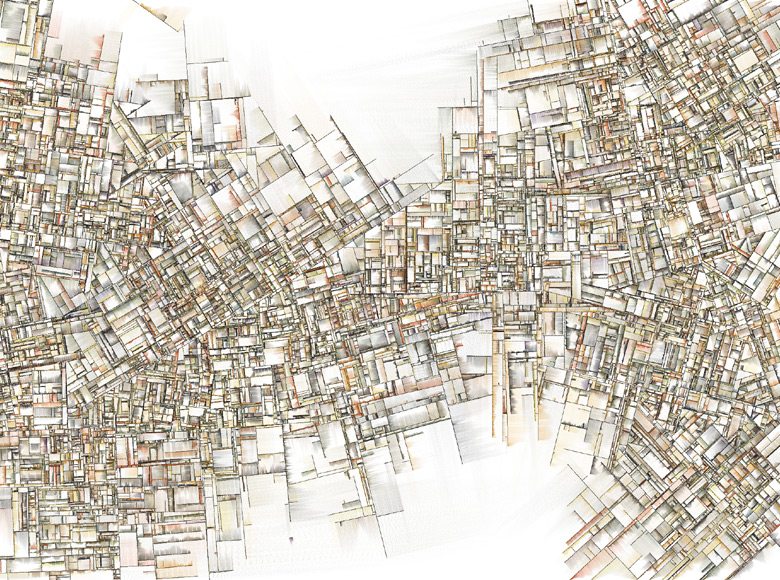algorithmic modeling for Rhino
i have attached my gh file where i was trying to do it in a very naive manner, the 'b' part of the image. Can anyone give me a clue on how to get the pattern in a smarter way?
Views: 7647
- Attachments:
Replies to This Discussion
-
This seems like a good place to start:
http://www.grasshopper3d.com/photo/brep-cracking?context=latest
-
-
hi David,
thanks for the prompt reply, trying to fathom the logic from the link that you sent,most of it is clear, one part is in chinese!
great work Dixon! is that a voronoi compoment that is used in the definition, cant figure out that coz its in chinese.
-
-
It reminds me of this project:
http://www.complexification.net/gallery/machines/substrate/
Since java is so 90s, here's a processing.js link
-
-
class SandPainter { color c; float g; SandPainter() { blah, blah
... is not finished (is this a challenge for lazy people? he he). -
-
A crack is not a crack, without considering where a force was applied that caused the material to fail. A ceramic crack is different from a windshield crack, is different from an asphalt crack. Looks like those University guys don't get out much to observe the environment they live in. :)
-
-
It's bedtime and the Angle Variance doesn't do anything yet. But the attached is a script that performs a fracture between the two longest edges of each fragment, using perpendicular breaking curves.
Every additional fracture always affects the largest fragment, until the number of fragments equals N. No attention is paid to number of edges per fragment.
- Attachments:
-
- Attachments:
-
-
Here is an example of how an asphalt crack, which is in reality is a natural fractal, might be created without using grasshopper offset see discussion: http://www.grasshopper3d.com/forum/topics/solid-model-to-voronoi
(attention: webmaster please add topic numbers to each thread reply)
1. see my HI.png post2. see my attachment: middle pic creates cracks simply by using Meshman's Catmull-Clark sub-division
3. Thank you David for your reply :) How can I elevate each fracture with a random height?
- Attachments:
-
-
Generate N random numbers using the Random component, then extrude each fragment straight up using that random number as the z-component of the extrusion vector.
-
-
hi david,
i ran this in gh and wow!
i have another query, is it possible to have less cracks(larger areas) in the periphery and denser cracks(less areas) towards the center of the surface -
-
It's possible in principle, as fragments are broken recursively. So you could weigh the fragments near the border and break them more often. Would however require a fair amount of additional code.
-
-
+1 to the complexification link. It's the aesthetics but damn what a beautiful project.
-
© 2026 Created by Scott Davidson.
Powered by
![]()
